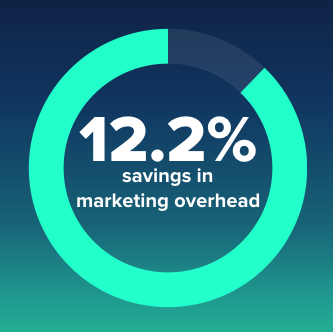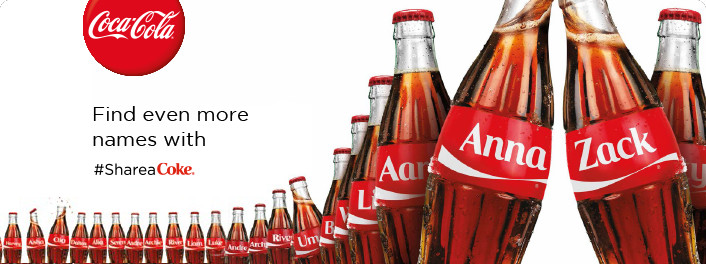How and Why Integrated Marketing Works for B2B Tech

If you’re a marketer, you’ve likely heard of the “Rule of 7.” You know, the idea that your prospective customers need to knowingly come across your brand in some form at least seven times in order to notice it and take action.
And that only covers the awareness stage of the buyer’s journey. Converting a lead to a customer requires an additional 5-7 touch points on average.
So this means that a prospective customer interacts with your brand anywhere from 5-14 times before making a purchase. That’s a lot of effort to close a deal! And with that many interactions happening, no single channel can make an impact alone. Every interaction needs to be connected and intentional, meaning your company’s brand, messaging and strategy must work together with united purpose.
Do you have any idea — even an educated guess — how many times you must touch your prospective customers before they take a first action?
Integrated marketing thrives here, especially for B2B tech, especially if you are like many companies have a small addressable market making every touch matter more. Integrated marketing makes possible:
- discovering the number of touches
- understanding what they mean to your targets
- maximizing those touches
- increasing your bottom line
What is Integrated Marketing?
Integrated marketing is a strategy that unifies a company’s brand and messages across all necessary channels. The strategy takes into account the different tactics required to be successful on each channel and develops a comprehensive plan that will make a maximum impact.
Need help visualizing it? Take a moment and close your eyes. What are some of the most memorable marketing campaigns you remember viewing as a consumer?
Maybe it was Coca Cola’s “Share a Coke” campaign. You saw the social media ads, the TV commercials, the new branding, and yes — even the new packaging on every store’s shelves. Even if you’re not a soda drinker, you likely still searched for your name at your local supermarket.
Or maybe you’re most compelled by Southwest, whose “Transfarency” slogan has transcended everything from emails to digital ads to social media to even the napkins they hand you in-flight.
Or maybe, it was something else. Regardless, these B2C campaigns certainly have something in common with integrated marketing campaigns for B2B technology: when done right, they create a message that resonates, drives new revenue, and increases retention.
What Is Included in Integrated Marketing?
There are numerous components of an integrated marketing strategy, and each one depends on the foundation and messaging of the campaign. Once this foundation is established, you’ll then need to determine how that messaging is delivered.
1. Foundation
The foundation of your integrated marketing strategy is the most important, as it will be what drives the unified message you promote. At Golden Spiral, we recommend this foundation building happen before you do anything else. During this phase, you should identify:
- Problems your market faces (your Buyer Matrix)
- Characteristics that set you apart
- Your growth objectives
- Strategies, positioning, and tools needed to connect to the market
2. Campaign
Once you have your foundation, you will begin to build your multi-channel campaign. But, don’t skip to planning content for your campaign just yet; you have some additional groundwork to do. In order to build an effective integrated marketing strategy, you will need to define your:
- Campaign goals: What defines success? What will be your Key Performance Indicators (KPIs)?
- Campaign concept: What will be the message you want to share across your multi-channel campaign?
- Campaign roadmap: When and how will you begin to develop collateral? When will you re-visit the campaign for analysis?
3. Channels
What channels will be required for your integrated marketing strategy? Likely, quite a few. And each one will need its own set of campaign collateral to fit the channel’s best practices for engagement and success. For your integrated marketing campaign, you will likely have to choose some (or all) of the following channels:
- Search Engine Optimization (SEO)
- Social Media Ads
- Social Media Organic Content (on your selected social media channels)
- Company Website
- Sales Slicks and Printed Marketing Collateral
- Trade Show Booth
- Public and Media Relations
Whether you work with three channels or 20, the strategy remains the same: a unified message that seamlessly integrates all of them.
4. Analysis
Once your integrated marketing campaign has been unleashed into the wild, the work has only begun. You’ll want to keep a close eye on performance, gauge results, and make sure you are on track to reach those goals you set early on. Most importantly, you’ll need to begin planning your next step.# Why Invest in Integrated Marketing?Because so many touch points are required to close a deal, investing in integrated marketing ensures your prospects’ interactions with your brand are seamless and unified.
Here are some major reasons to invest in an integrated marketing strategy:
 You’ll save time and resources: While investing in an integrated marketing strategy might feel like a lofty investment up front, integrated marketing often results in automated marketing efforts, saving time and an average of 12.2% in marketing overhead. In addition to automation, integrated marketing means you’re zoning in on one message and campaign, helping your team focus on what matters and eliminate the constant creation of new messaging, collateral, etc.
You’ll save time and resources: While investing in an integrated marketing strategy might feel like a lofty investment up front, integrated marketing often results in automated marketing efforts, saving time and an average of 12.2% in marketing overhead. In addition to automation, integrated marketing means you’re zoning in on one message and campaign, helping your team focus on what matters and eliminate the constant creation of new messaging, collateral, etc.- Streamline your efforts: Because integrated marketing unites marketing and sales, it is often an effective remedy to disjointed (and maybe even disgruntled) sales and marketing teams. When everyone is focused on the same message and the same goal in their separate channels, sales and marketing alignment happens organically.
- It builds greater understanding of your brand: When you project the same message across multiple channels, there is no question as to who you are, or what you offer. This sense of clarity can help increase conversions because it builds confidence and awareness in your brand sooner.
- It can go viral: We’re not saying that your integrated campaign for stronger cybersecurity will go viral in the same way that Coca-Cola or Southwest’s campaigns have, but we are saying that a strong integrated campaign can “go viral” within your industry — and that’s what really matters, right?
Hiring an Integrated Marketing Agency
Hiring an integrated marketing agency is an effective way to ensure your company is implementing the right tactics in the places that offer the most ROI for your business. When you hire the right agency, it will help you build a strong foundation, plan an effective strategy, select the right channels, and analyze your successes — all for a maximum impact and ROI.
If you plan on working with an agency, consider the following:
- Is it really an integrated marketing agency? Integrated marketing agencies specialize in launching multi-channel campaigns. Rather than working individually with a web design agency in Atlanta, an SEO agency in Charlotte, and a content agency in Chicago — getting all specialties under one roof helps to unify the message you are sharing with the world.
- What is its focus? Because integrated marketing strategies require experience in selecting the appropriate channels and implementing their related campaigns, selecting an agency that specializes in B2B technology is key.
- What is its expertise? If you know you want an integrated marketing campaign, but only plan on outsourcing a portion of it, you will want the agency to appropriately accent your team. Consider the agency’s expertise with different channels and mediums, and how that can complement your team (or supplement it).
Key Takeaway
Budweiser is another company famous for integrated campaigns. Their Clydesdale horses are their most iconic symbol seen across all channels. Powerful draft horses — like Clydesdales — are the best example of the power of integration. One horse can pull a load of 8,000 pounds. Logic and simple mathematics would lead some to think that two horses could pull 16,000. However, when two horses are yoked together with the same purpose, they pull three times the weight of one horse — 24,000 pounds. And the weight continues to increase exponentially as you add more horses to the team. In addition, if you talk to a horse expert, you’ll discover that since horses are pack animals there seems to be a psychological effect at work, too — the horses work harder and more in sync as a group.
That type of power and sync happens when you integrate your marketing. When you integrate all of your marketing efforts together and you integrate your marketing team in key ways with the rest of your organization, you’ll discover you can pull much more weight than you ever imagined. And the results of your marketing efforts might be cause to pop a cold one.





